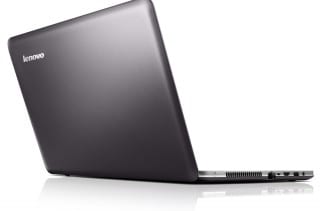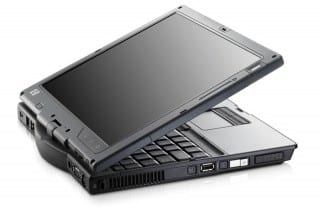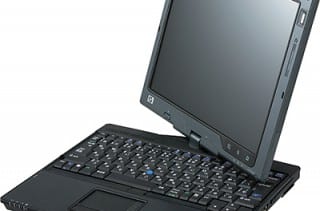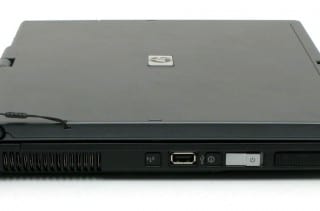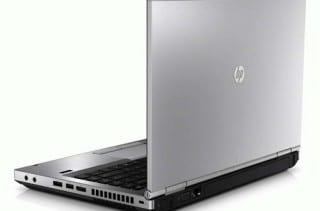Is your laptop compatible with GNU / Linux?
In the previous post on where to get a list of Linux-compatible laptops, several users (myself included) have mentioned their hardware, their brand and / or model of laptop, saying that it is compatible with Linux, that it works without problems.
In fact, in the article itself I mentioned my two laptops (one mine and one my girlfriend uses) and that both work perfectly with Linux (Debian, Ubuntu, ArchLinux), Elav mentioned in a comment that his laptop works just as wonderfully, well , This post is to comment on our laptops and their compatibility with Linux, as well as some tip or adjustment that we had to do so that our hardware worked perfectly.
Lenovo IdeaPad U510
This is the laptop that they recently gave to elav. I’m not sure where it was specifically bought from, in the previous article I mentioned that there are places to buy hardware online; beyond the official sites of the manufacturers. For example, they can buy computers, parts or notebooks on OLX If you are from Argentina (as I said, it is something like a MercadoLibre), the laptops and computers section is together, I leave the category of computers and accessories here. Here are several images of the Lenovo IdeaPad U510 de elav:
Pretty huh? 😀 The laptop hardware is as follows:
- Screen: 15.6 ″ (Widescreen)
- Resolution: 1366 x 768 pixels
- Numeric and Backlit Keyboard.
- Processor: Intel Core i5
- RAM: GB 6 DDR3
- HDD: 1TB (1024GB) SATA + 24GB SSD
- Graphics: Intel HD 4000
- WiFi: 802.11bgn
- Bluetooth.
- Ethernet: RJ45
- 2 USB 2.0 ports & 1 USB 3.0 ports
- HDMI.
- Card reader
Elav told me, he had to disable UEFI in the computer’s BIOS to be able to install Linux without much trouble. Also, since you have an SSD + HDD you had to format it in the ArchLinux installation without the journal:
mkfs.ext4 ^has_journal /dev/sda1
SSDs need a mathematical adjustment, that is, to correctly assign where the sectors begin, which I did with GParted on a LiveCD, since it adjusts it automatically
As he tells me, everything works like a charm for him. Logical thing, the main thing (in my opinion) in terms of laptops and Linux is the graphics, the Lenovo has an Intel per graphics chipset, it is the most noble and simple there can be.
HP Compaq tc4400
This is the first laptop that I had, it was a present that they gave my father on a business trip he did. This is the laptop that accompanied me for more than 4 years of Linux life 🙂
The hardware of this device is currently modest, very modest, however in 2008 I don’t even say… a cannon!
- 14 ″ screen (4.3, no Widescreen)
- Resolution: 1024 x 768 pixels
- Processor: Intel Core2Duo
- RAM: 1GB DDR2 DualChannel (later expanded to 2GB)
- HDD: 320GB (SATA)
- Graphics: Intel 925
- WiFi
- Bluetooth.
- Ethernet: RJ45
- 3 USB 2.0 ports
- VGA
- Card reader
- TabletPC mode (touch screen with pen / pencil, Wacom)
With this laptop I used many distros, from Ubuntu 6.06 to 10.04, through Debian, a taste of openSUSE, Centos, etc. All without exception worked well for me. I even remember I think it was Ubuntu 9.04 when they incorporated ext4 and the new graphic for Intel that all worked badly, I never had any problems.
The only problem I had was with the TabletPC mode, which has a design error or flaw. When it is connected to the AC (alternating current) the mouse pointer goes crazy, it does not stop moving towards the lower right corner, this happened in Linux and Windows, after reading a lot I knew that it was a factory defect of the whole series tc from HP.
Personally, I didn’t use this from the TabletPC, so I uninstalled (or didn’t install) the wacom driver and that’s it.
Today the laptop is still working, my girlfriend uses it with Debian Wheezy and everyone is so happy, there is still a laptop for years.
HP EliteBook 8460p
This is mine, another gift that a friend of his on business gave my father, I took possession of this laptop (as I did with the previous one) well let’s face it, I make better use of it 😀
The hardware of this is much more modern:
- Screen: 14 ″ (Widescreen)
- Resolution: 1366 x 768 pixels
- Processor: Intel Core i5
- RAM: GB 4 DDR3
- HDD: 320GB (SATA) . (although I plan to add an SSD)
- Hybrid Graphics: Intel HD 3000 & AMD / Ati Radeon HD 6400M
- WiFi: 802.11bgn
- Bluetooth.
- Ethernet: RJ45
- 2 USB 2.0 ports & 1 USB 3.0 ports (or so I think, copy faster but not blue hehe)
- Card reader
I installed this one on the first day of Debian Testing, everything worked perfectly for me. Then I installed ArchLinux and made everything except Bluetooth work for me, but not because it doesn’t work, but because I haven’t dedicated even 2 neurons to the matter.
As you can see it has a hybrid graphics, that is, Intel and also AMD / Ati. I read many manuals on the internet about how to make these work, specifically how to make only one work and the other is turned off, however apparently the kernel or the drivers themselves take care of this. That is, I just install the drivers for the AMD / Ati and voila, in Debian it was:
sudo apt-get install mesa-utils radeontool fglrx-driver
Then generate the configuration for the Ati:
In ArchLinux . mmm, right now I don’t even remember 0_oU, I installed Arch 10 months ago and I have not reinstalled (I have not needed it, everything is super stable), I forgot how I configured the Ati, when I have to reinstall again I will have a bad time LOL !, right now I have the ati-dri packages installed and radeontool.
Anyway, you can install the package vgaswitcheroo that as I have read will help you turn off one of the two graphs.
And you?
Elav really likes Dell even though he now has a Lenovo, I’ve always been a fan of HP, with all its pros and cons.
What brand have you had that has gone well with Linux? … What is your preference?
The content of the article adheres to our principles of editorial ethics. To report an error click here.
Full path to article: From Linux » Other » Is your laptop compatible with GNU / Linux?
How do I know if a laptop will work with Ubuntu?
I want to buy a laptop at some point in the near future, but not knowing beforehand whether it works with Ubuntu makes the whole operation risky and tiresome. I would like to know if there is some kind of official hardware database where I can enter the name of the laptop I’m interested in and see if it’s 100% compatible out of the box, or in case it isn’t what is it exactly that doesn’t work (ideally also if there is a way to fix it). Does Canonical have a project along these lines?
5 Answers 5
When I bought mine, I simply brought a live CD in the store, and asked to try it on their laptops. I explained them what this is, and that I want to check the compatibility of the different components with Ubuntu. I sometime had to explain what Ubuntu was. One place told me a flat NO, that I could not try it. I ran out of the store as fast as I could. At the store where I actually bought my portable (in Dec. 2006), I tested that the display was actually working on the internal monitor, at the full resolution, as advertised on the spec sheet, that the wireless adapter was found, and that I could use the card reader, with a card I brought in. I finally tested the sound itself, which was rather easy to do.
Today, you could bring Linux on a USB disk instead, or even an SD card. Also, in 2010, you should expect every sales rep on the floor to be at least know about Linux. Usually, they should understand that starting it from a CD, especially if this is a branded one, not burned at home, there is no harm that will be done on the machine.
NOTE: The fact that some components are not discovered right at boot from a live CD does not mean that Ubuntu will not support it. Chances are that you will find the proper driver for it. You will just have some manual setup to do.
You may also want to note the brand names and models from a store and check on the net, with Google. You should usually find either some test cases or message exchange about it that will give you a good idea about the model you are looking for.
Как проверить ноутбук на совместимость с linux?
Хочу купить ноутбук, но вот проблема, я планирую его под linux эксплуатировать. Как я могу проверить ноут в магазине на совместимость с linux?
У меня в воображении следующая картина:
1. Создаю загрузочный образ на флешку.
2. Прихожу в магазин с этой флешкой, загружаю linux с флешки на ноуте.
3. Запускаю какие-то утилиты, которые проверяют совместимость дистрибутива с железом (я на mint/ubuntu сижу).
4. После проверке покупаю ноут и не знаю проблем с эксплуатацией (хотя бы, чтобы их было не больше чем на ПК).
Если такие «волшебные» программы?
Средний 2 комментария
не загрузочный образ,
а устанавливаем голую систему на флешку
бежим в магаз, и там уже смотрим какие еще нужны дрова,
а если вафля работает, то другого и не нужно
Правильно мыслишь.
При выборе загрузки загружайся только в обычном режиме, никаких «compatibility mode».
Когда загрузишься проверь сразу работает ли Wi-Fi (если сразу нет вафли, значит какой-то экзотический модуль и драйвера прийдется докачивать), да по сути и всё.
Рекоммендую выбирать модели на основе процессора intel с графой от nvidia, меньше проблем с драйверами будет.
А если встройка от того же intel?
А я, почему то, на оборот думал, что графика от intel и linux — не совместимые вещи
Если ты можешь проверить на месте с флешкой и интернетом, то у тебя вин-вин ситуация.
Самые проблемные вещи в linux:
* видеоускоритель, особенно когда в ноутбуке их два (дискретный и встроенный)
с высокой вероятностью будут проблемы с переключением их туда/сюда, со сном (тут вообще миллион проблем) и принципиальным 3D-ускорением воспроизведения видео и игр (это две отдельные задачи, одна может работать другая нет, по разному! смотри 60fps full hd и видео под fps матрицы), в довесок смотри синхронизацию видео с экраном (tearing) при просмотре динамичной сцены.
* периферия
сенсорный экран, тачпад, wifi и bluetooth (вообще весь радиомодуль, например с sim картой), картридер, nvme (бывают с ними проблемы! например только в режиме uefi) и извращения с клавиатурой (например подсветку не выключить/не настроить в linux потому что утилиты только под windows), сканер отпечатков (очень редко в linux работает)
* проверяй режим сна, режим hibernate, для ноутбука это очень важные вещи
* проверь скорость работы, посмотри какие процессы в системе висят, я помню был очень дешевый ноутбук-трансформер с сенсорным экраном (очень дешевый кажется digma citi 400), так вот в штатной ubuntu там периодически всплывал какой то процесс, загружающий половину процессора, подробности не помню что то там с intel в названии, с ходу не нашел просто удивился.
Советую заранее подготовиться и погуглить информацию о желаемых моделях, чтобы не тратить время в магазине
Мне кажется лучше идти от обатного, а не сразу поход в магазин с флешкой.
Начните с гугления что-то типа «notebook for linux». dell и lenovo в среднем по больнице работают с линуксом нормально.
Потом сужаете поиск до нескольких моделей и уже по ним ищете инфу, насколько хорошо они работают с линуксом. Так еще сузите. Ну а потом уже покупаете.
Так же, имейте в виду, что ноутбук с дискретной видеокартой (чисто потенциально) будет проблемнее, чем ноутбук с интегрированной видеокартой. Также, имейте в виду, только на будущее, что если захотите работать в swaywm, то у него нет официальной поддержки карт nvidia.
В целом с подходом согласен. Но те же производители dell и lenovo, нечего не пишут про поддержку linux тех решений, которые мне подходят. У dell сайт ужасен, такое ощущение, что он у них просто для галочки, я там ничего не смог найти. У lenovo с сайтом по лучше, но все ровно про linux там мало.
Осложняется это все тем, что на январь 2023 выбор в магазинах не сильно большей, из за сложившейся ситуации в мире. Приходится сначала смотреть, а что вообще есть на наличии.
Искать в интернете тоже вариант, очень редко, когда там что-то можно найти по конкретной модели. Есть такие сайты как https://linux-laptop.net/, но там одно древнее г*вно мамонта.
Поэтому я данный вопрос и задаю. Нахожу я ноутбук N, в наличии есть, но на винде, производитель ничего про linux не пишет, тех поддержка на себя тоже ответственность не берет (им вообще пофиг, работают только по скриптам), в интернете по него еще ни чего нет. Вот я и хочу прийти и проверить как-то, нормально ли linux на нем будет работать.


